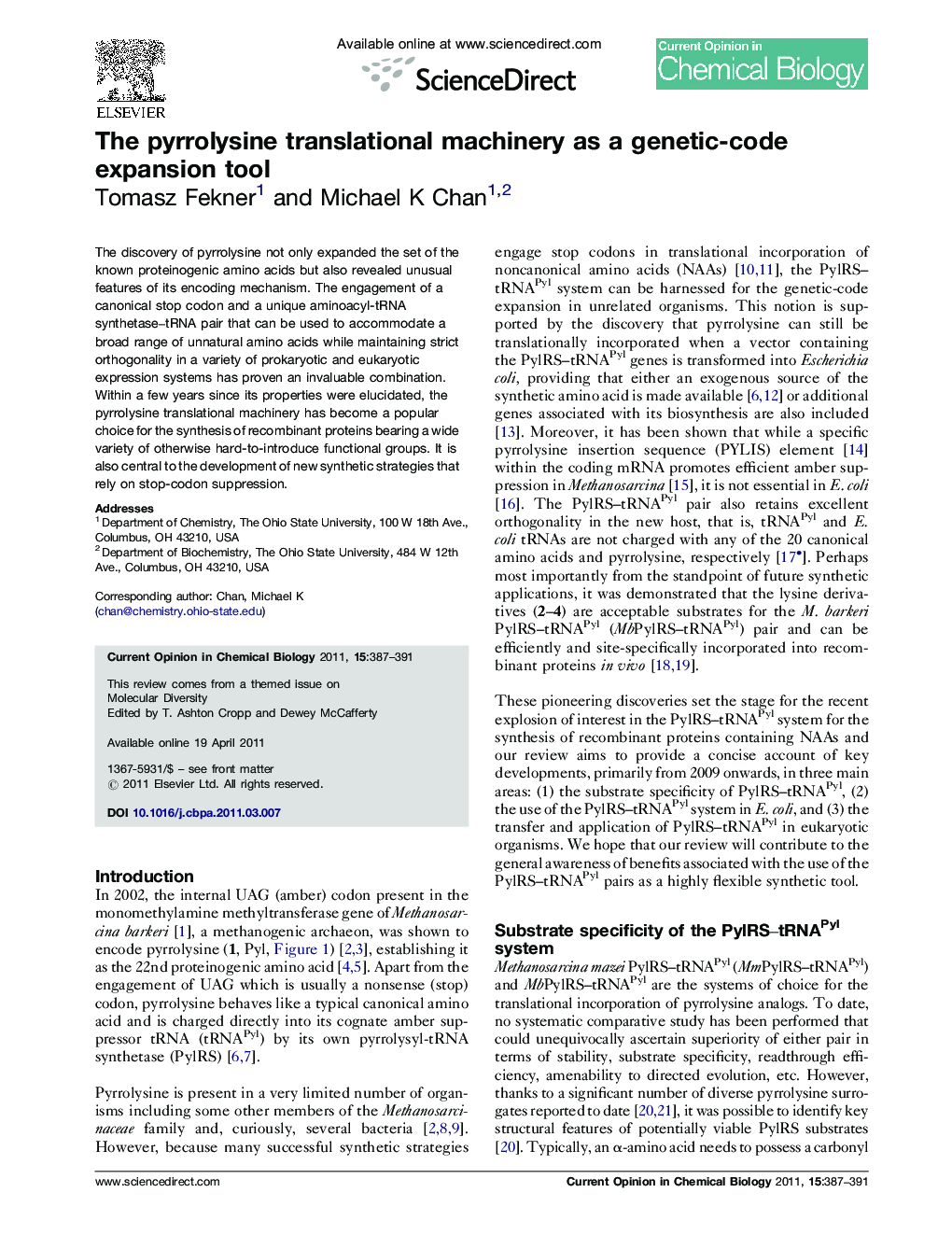| Article ID | Journal | Published Year | Pages | File Type |
|---|---|---|---|---|
| 1256685 | Current Opinion in Chemical Biology | 2011 | 5 Pages |
The discovery of pyrrolysine not only expanded the set of the known proteinogenic amino acids but also revealed unusual features of its encoding mechanism. The engagement of a canonical stop codon and a unique aminoacyl-tRNA synthetase–tRNA pair that can be used to accommodate a broad range of unnatural amino acids while maintaining strict orthogonality in a variety of prokaryotic and eukaryotic expression systems has proven an invaluable combination. Within a few years since its properties were elucidated, the pyrrolysine translational machinery has become a popular choice for the synthesis of recombinant proteins bearing a wide variety of otherwise hard-to-introduce functional groups. It is also central to the development of new synthetic strategies that rely on stop-codon suppression.
